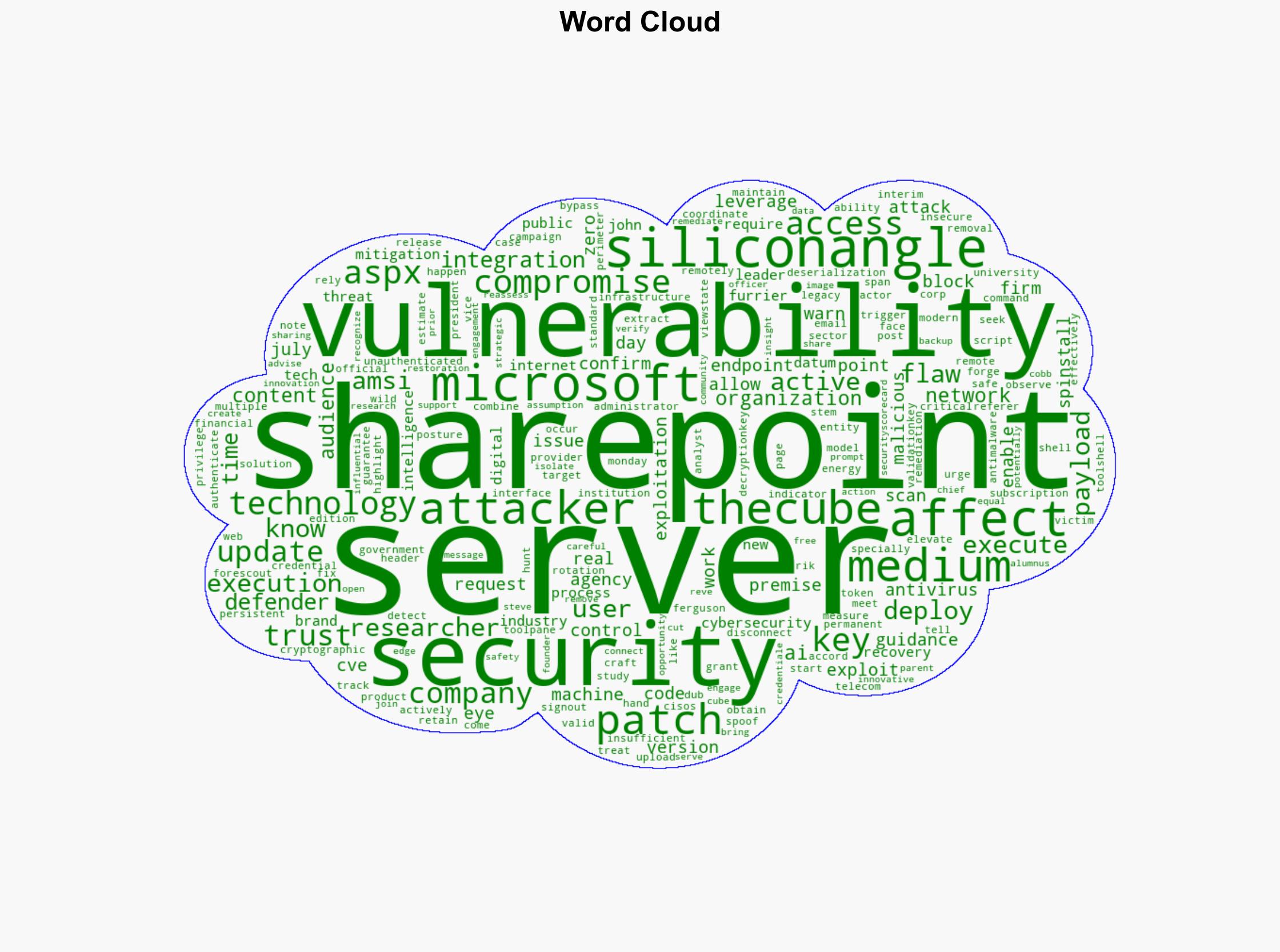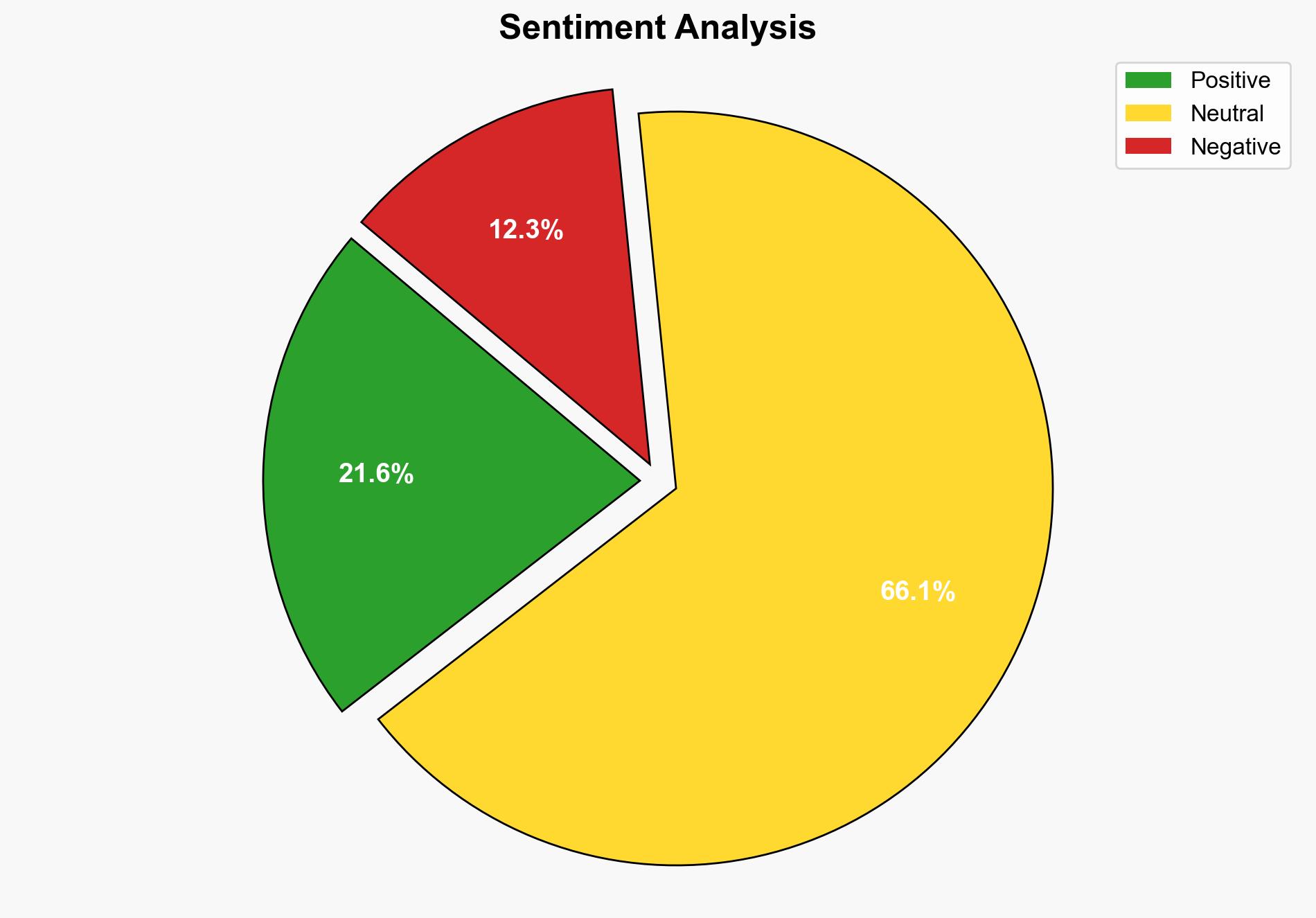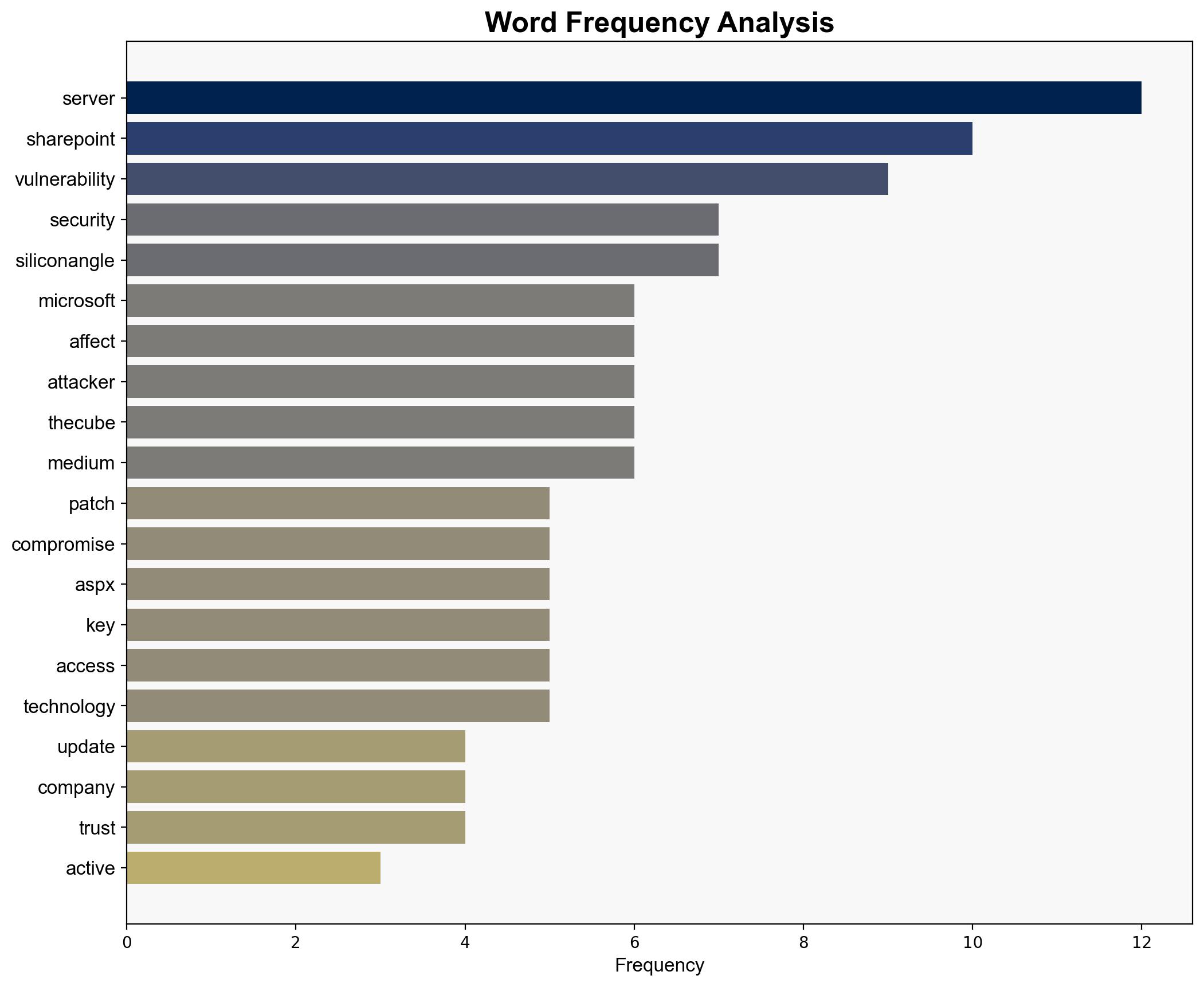Active attacks target Microsoft SharePoint zero-day affecting on-premises servers – SiliconANGLE News
Published on: 2025-07-20
Intelligence Report: Active attacks target Microsoft SharePoint zero-day affecting on-premises servers – SiliconANGLE News
1. BLUF (Bottom Line Up Front)
Recent active attacks exploit a zero-day vulnerability in Microsoft SharePoint, affecting on-premises servers across multiple sectors. Immediate patching and security measures are critical to prevent unauthorized access and potential data breaches. Organizations should prioritize updating affected systems and implementing enhanced monitoring to detect and mitigate ongoing threats.
2. Detailed Analysis
The following structured analytic techniques have been applied to ensure methodological consistency:
Adversarial Threat Simulation
Simulations indicate that attackers leverage insecure deserialization to execute remote code, gaining control over server credentials. This allows them to maintain persistent access and execute commands as trusted users.
Indicators Development
Key indicators include the deployment of malicious ASPX payloads and the extraction of cryptographic machine keys. Monitoring these activities can aid in early detection.
Bayesian Scenario Modeling
Probabilistic models suggest a high likelihood of continued exploitation, particularly targeting sectors with critical infrastructure.
Network Influence Mapping
Mapping reveals coordinated campaigns potentially involving multiple threat actors, increasing the complexity of the threat landscape.
3. Implications and Strategic Risks
The exploitation of this vulnerability poses significant risks to government agencies, financial institutions, and critical infrastructure sectors. Persistent access by attackers could lead to data breaches, operational disruptions, and potential espionage. The reliance on perimeter security models is challenged, necessitating a shift towards zero-trust architectures.
4. Recommendations and Outlook
- Immediately apply the latest patches released by Microsoft to affected SharePoint servers.
- Enable AMSI integration and deploy Microsoft Defender Antivirus to detect and block known indicators of compromise.
- Conduct a thorough review of access logs and network activity to identify potential breaches.
- Consider isolating affected servers from public internet access until fully remediated.
- Scenario-based projections:
- Best case: Swift patching and monitoring prevent further exploitation.
- Worst case: Delayed response leads to widespread data breaches and operational impacts.
- Most likely: Mixed response with some sectors effectively mitigating risks while others remain vulnerable.
5. Key Individuals and Entities
Rik Ferguson, Steve Cobb
6. Thematic Tags
national security threats, cybersecurity, critical infrastructure, zero-day vulnerability




